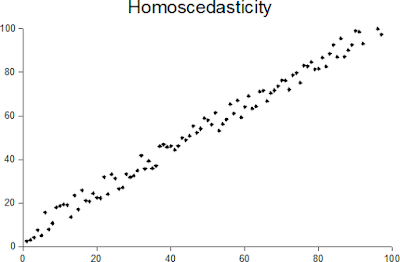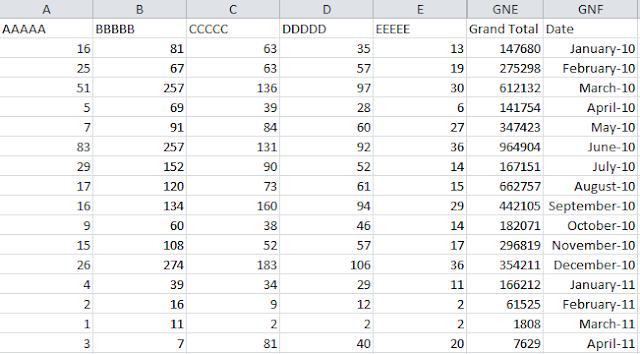Homoscedasticity and heteroscedasticity
Homoscedasticity and heteroscedasticity - two of the scariest sounding terms in all of Statistics! So what do they mean?
When one calculates the variance or standard deviation of a dataset of random variables, one assumes that the variance is constant across the entire population. This assumption is homoscedasticity. The opposite of this assumption is heteroscedasticity.
In other words, a collection of random variables is heteroscedastic if there are sub-populations within the dataset that have different variances from others (source: https://en.wikipedia.org/wiki/Heteroscedasticity). Another way of describing homoscedasticity is constant variance and another way of describing heteroscedasticity is variable variance.
Jeremy J Taylor in his blog provides a great example of a distribution that is heteroscedastic. In his example, the independent variable is "age" and the predictor variable is "income". The example discusses how incomes start to vary more as age increases (as some people earn more than others as they grow older). You can read his blog on this topic here.





Comments
Post a Comment